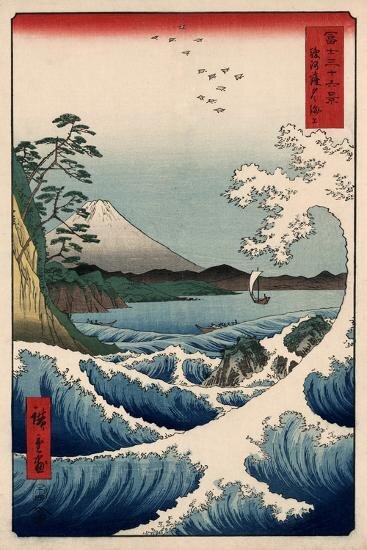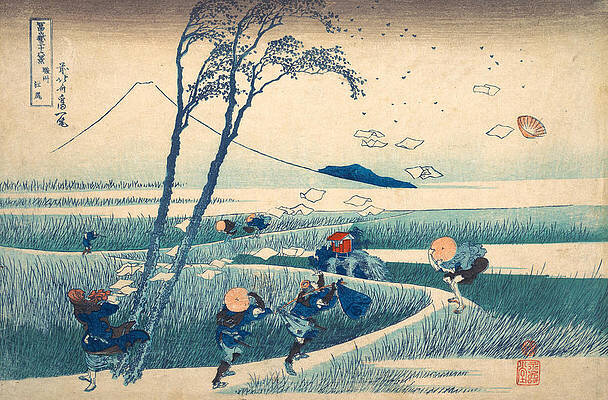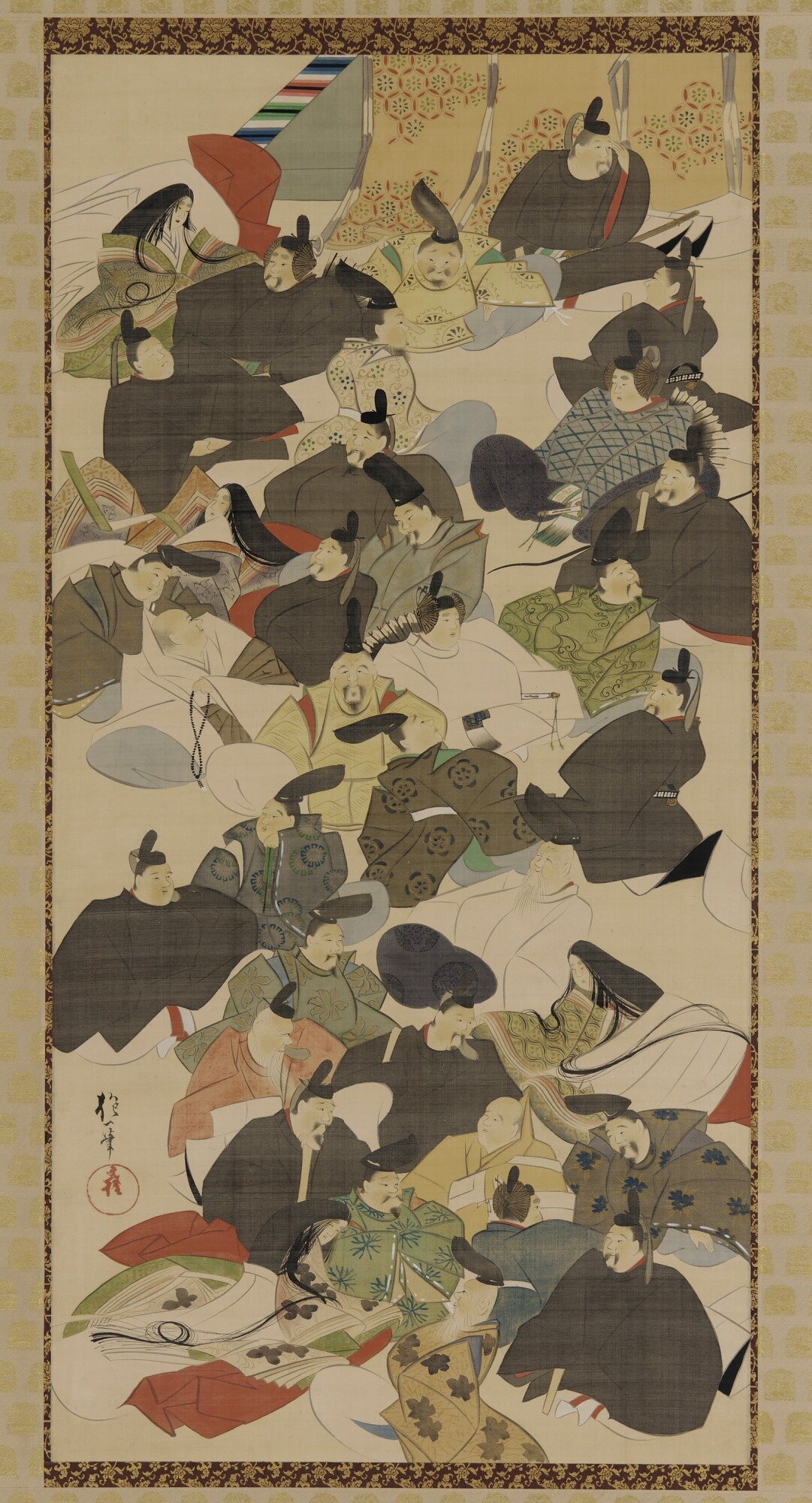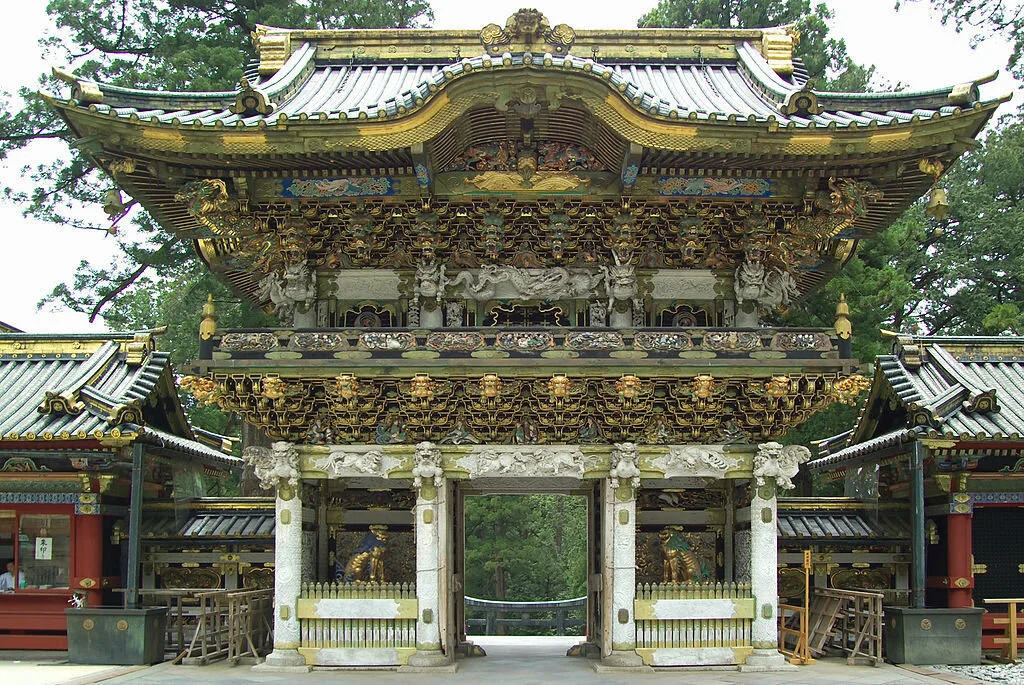Cranes (detail) by Ogata Korin, Edo Period c. 1700, Freer Gallery of Art, Smithsonian
This is part of a larger work (a screen). The repetition of the from of the group of Cranes gives the work a lighthearted charm.
Your Custom Text Here

Cranes (detail) by Ogata Korin, Edo Period c. 1700, Freer Gallery of Art, Smithsonian
This is part of a larger work (a screen). The repetition of the from of the group of Cranes gives the work a lighthearted charm.

A Sudden Gust of Wind (after Hokusai), Jeff Wall, 1993.

Ejira in Suruga Province, Hokusai, from Thirty-six Views of Mt. Fuji, c, 1831.

Taizoki (Womb World) of Ryokai Mandara, Early Heian period, Japan.
Made of 12 zones that represent the world of Buddha with the figure in the middle being the Cosmic Buddha. There are more than 400 figures in the surrounding areas including deities, animals and spirits.

The Great Wave at Kanagawa (from the series Thirty-six Views of Mt. Fuji), c.1830-32 by Katsushika Hokusai, The Metropolitan Museum of Art.
One of the most famous members of the Ukiyo-e group of printmakers from the Edo period in Japanese Art. Hokusai's work is popular in his native country and was also popular among the 19th century French Impressionists. It continues to be popular throughout the world today and a museum dedicated to his art is in Obuse, Japan.

Sparrows, Edo Period, by Kubo Shunman.
Woodblock print, Ukiyo-e. These prints were created to be affordable and to appeal to a broad audience.

View From Satta Suruga, 1858 by Ando Hiroshige.
Hiroshige is the other famous name in Ukiyo-e printmaking. Younger than Hokusai, his work quickly became just as popular. His style is very appealing to a broad range of people while Hokusai liked to portray similar images with a slight edge to them.

Suruga Province, Hokusai

The Thirty-Six Master Poets, 1828 by Saki Hōitsu.
Created during the Edo period, this work is intentionally irreverent while at the same time paying tribute to revered poets of the 7th - 11th centuries.

Japanese Rabbit Netsuke, Late 18th early 19th century.
The most popular pronunciation is "net-ski", while the actual Japanese is closer to "netskeh," they were used weigh down the end of the sash or obi of a kimono. In the 19th and 20th centuries they became highly collectable and remain so today.

Winter Party, Edo Period (18th - 19th Century) by Utagawa Toyoharu.
The folding screens of Japanese art served as architectural features as well as decorative.

Yomeimon Gate by Hasui Kawase. The gate is from the early 17th century.
Yomeimon Gate is a a very famous site in Japan at Nikko. It is considered one of Japan's most beautiful buildings. The gate has over 500 carvings and to look at them all can fill the better part of a day. The gate is part of the Toshogu Shrine, which also houses a famous sculpture of a sleeping cat.



River Trout , c.1830 by Ando Hiroshige.
Hiroshige is best known for his woodblock prints, but was also a skilled painter and wrote a book on fish.

Cat and Spider, c.1868 - 1912 by Oide Toko, The Metropolitan Museum.
From the Meiji period which began during the end of the feudal period and when Japan was exposed to the modern world. An eclectic mix of the ancient mix of the two worlds.

The Modern Song (Modan bushi) by K. Kotani, 1930.
Japanese Art Deco period. The work presented shows us a country working to combine tradition with the modern western world whose influence had been felt in Japan for a while, but whose culture was only then beginning to be adapted. This can be seen most prominently in the depiction of the Japanese version of the "Flapper," or modern early 20th century woman, who was up-ending society in the West.